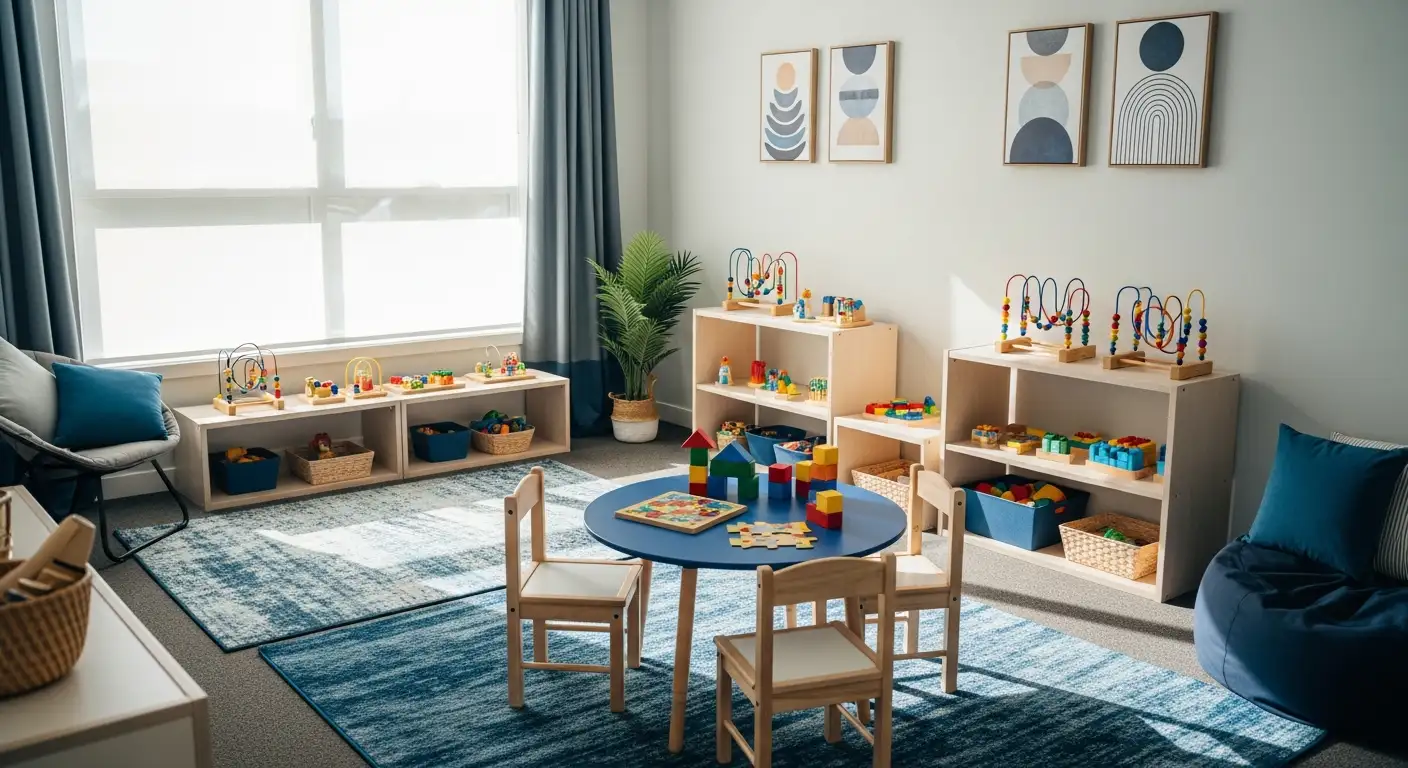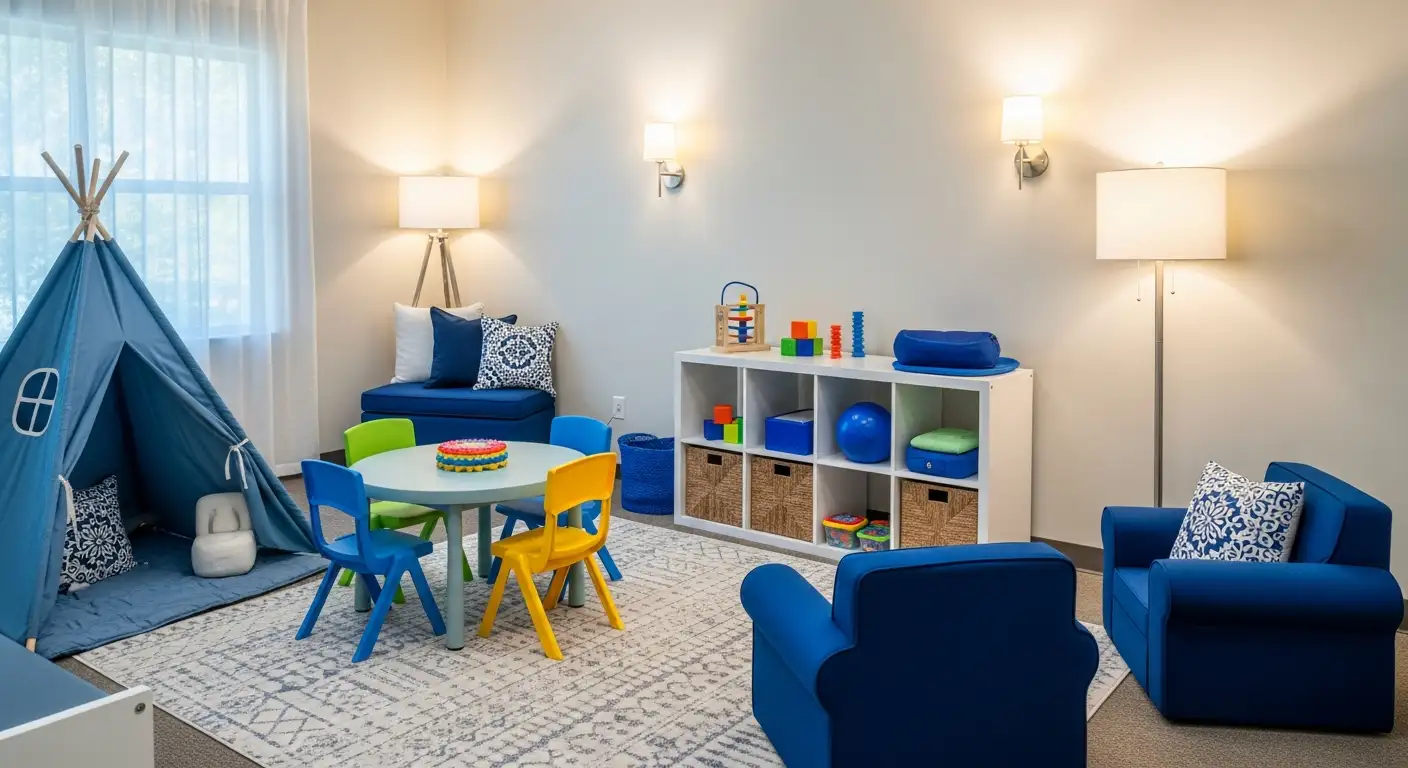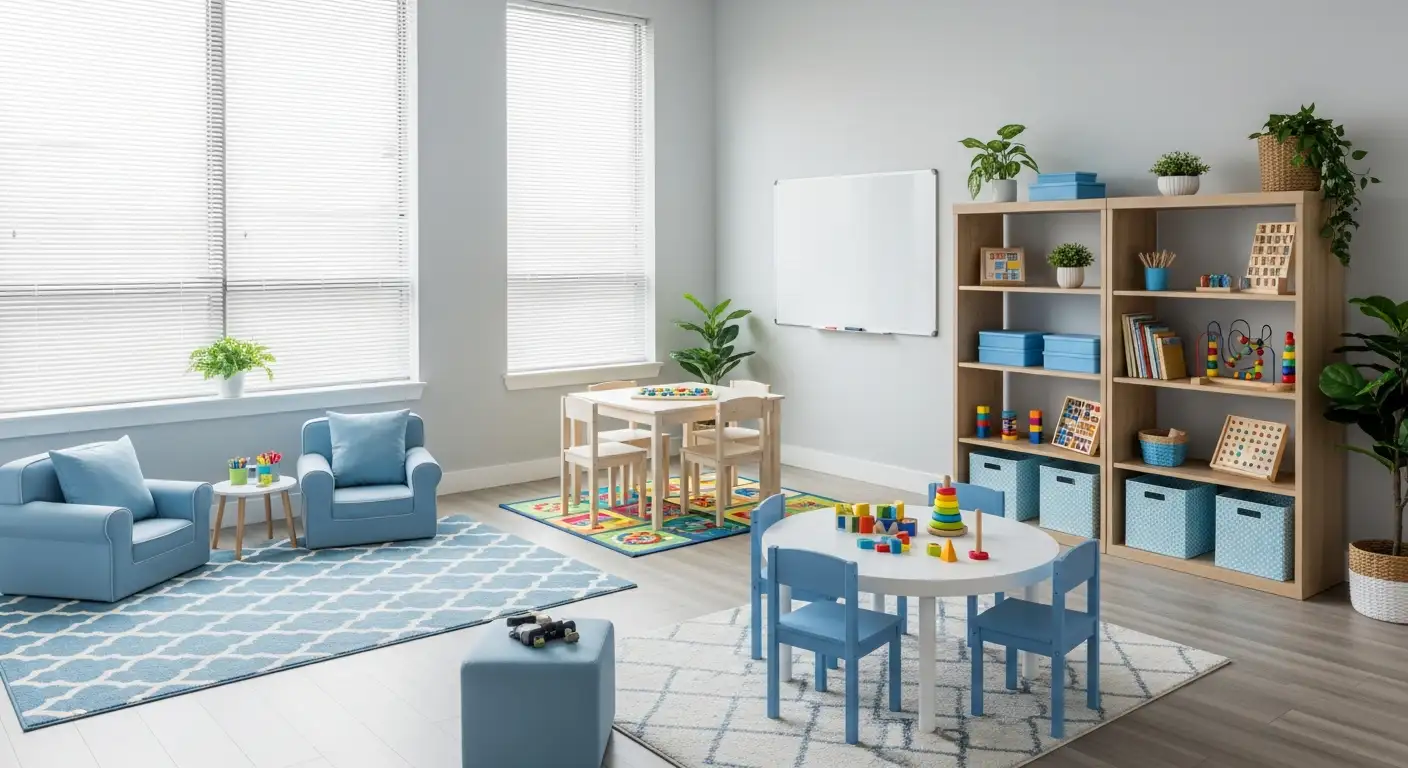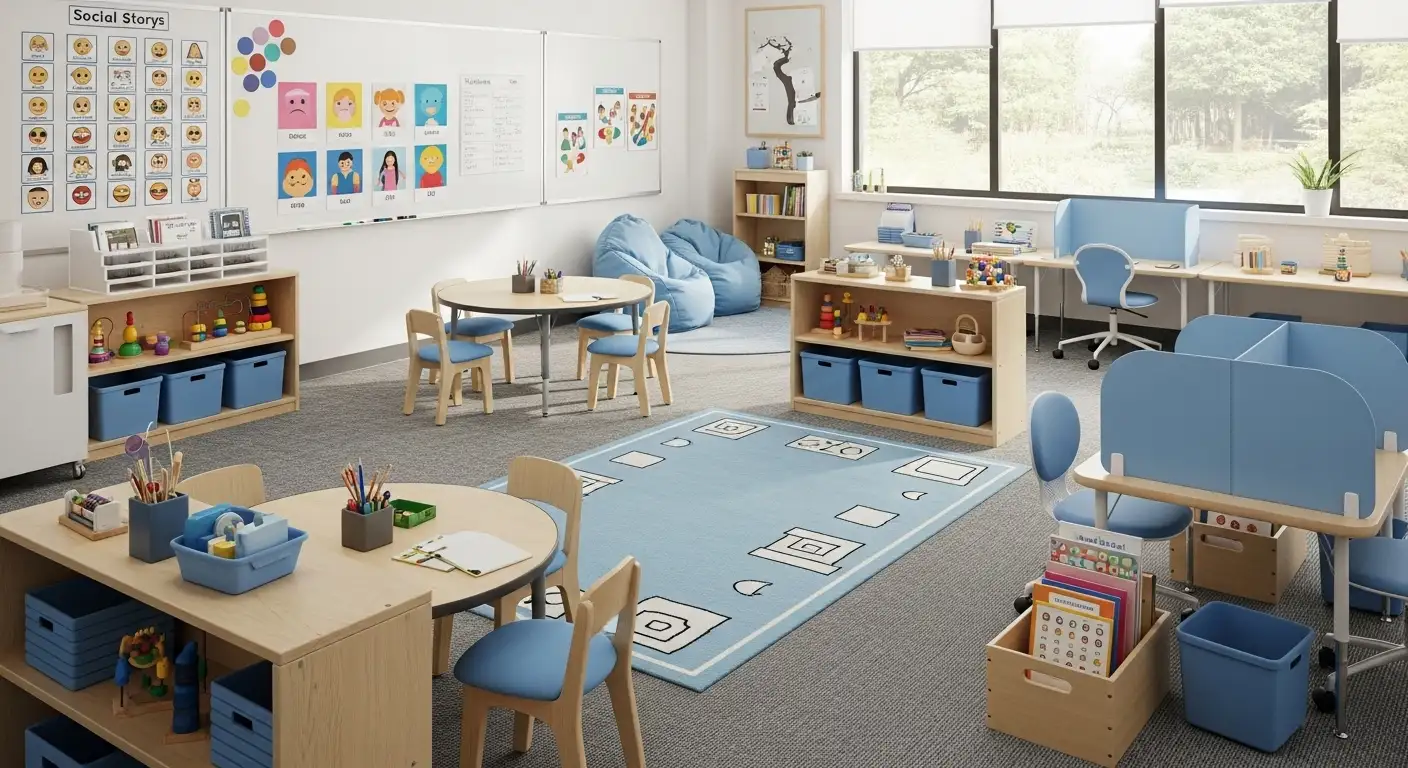A Parent’s Guide to Starting ABA Therapy in New Mexico
Learn how to start ABA therapy in New Mexico—get step-by-step guidance on diagnosis, insurance, choosing providers, and supporting your child’s progress.
.jpg)
Key Points:
- Understand what ABA therapy is, how it works, and how to know if it’s right for your child.
- Learn the step-by-step process to begin ABA therapy in New Mexico, including diagnosis, funding, and provider selection.
- Get practical tips to support your child’s progress and how providers like us at Attentive Autism Care can help you get started with ABA therapy in New Mexico.
When your child is first diagnosed with autism, one of the first recommendations you’ll likely hear is ABA therapy. It’s often referred to as the gold standard of autism treatment, and for good reason—it’s structured, individualized, and backed by decades of research. But as a parent in New Mexico, figuring out how to start can feel overwhelming. Between evaluations, insurance questions, waitlists, and unfamiliar terminology, it’s a lot.
ABA therapy providers in New Mexico like us at Attentive Autism Care work directly with families to simplify that process—but before anything else, it’s crucial that you understand what ABA therapy involves, how to navigate the system, and how to advocate for your child along the way. Let’s break it down.
What Is ABA Therapy and How Can It Help?
Applied Behavior Analysis (ABA) therapy is a science-backed approach to helping children with autism learn and practice functional skills. It focuses on how behavior works, how it’s affected by the environment, and how learning occurs.
At its core, ABA therapy is about identifying meaningful goals for your child and breaking them down into manageable steps—then reinforcing progress in ways that build independence.
Here are a few key areas ABA therapy can support:
- Communication Skills – Whether verbal or non-verbal, helping your child express wants, needs, and feelings.
- Daily Living Skills – From brushing teeth to following routines, ABA supports practical independence.
- Social Skills – Learning how to interact appropriately with peers, family, and community members.
- Behavior Management – Reducing behaviors that interfere with learning and development, like aggression, elopement, or self-injury.
The therapy is highly individualized. Each plan is based on your child’s current abilities, needs, and family goals. And in New Mexico, families can access in-home, clinic-based, or school-based ABA therapy, depending on the provider.
How to Know If Your Child Needs ABA Therapy
Not every child with autism is the same. While ABA therapy is a widely recommended treatment, it’s not a one-size-fits-all model. Here are some signs your child may benefit from ABA therapy:
- Delayed communication milestones – limited or absent speech, not pointing or using gestures.
- Frequent meltdowns – especially in response to changes in routine or difficulty expressing needs.
- Lack of social engagement – limited eye contact, avoiding play with others, or not responding to their name.
- Repetitive behaviors – like hand-flapping, spinning, or repeating the same words (echolalia).
- Safety concerns – such as wandering off or self-injurious behavior.
A developmental pediatrician or psychologist will typically assess these areas and, if appropriate, recommend ABA therapy. If you’re not sure, a good first step is scheduling an evaluation.
Steps to Start ABA Therapy in New Mexico
Starting ABA therapy in New Mexico involves several key steps. While every family’s path looks a little different, here’s a detailed roadmap to help you understand the general process.
1. Get an Autism Diagnosis
ABA therapy usually requires a formal autism diagnosis. In New Mexico, this can be completed by:
- A developmental pediatrician
- A child psychologist or psychiatrist
- A licensed clinical social worker (in some cases)
Make sure the provider is qualified to give a diagnosis recognized by insurance companies. Keep a copy of the diagnostic report—you’ll need it later for insurance and provider intake.
2. Understand Your Insurance Coverage
New Mexico law requires most insurance plans to cover ABA therapy for children with autism. Coverage may vary based on your provider, so check:
- Does your insurance plan cover ABA therapy?
- Are there age or hour limitations?
- Do you need prior authorization?
Medicaid (Centennial Care) also covers ABA therapy for eligible children in New Mexico. If you’re unsure where to start, we help families navigate these insurance questions every day at Attentive Autism Care.
3. Choose a Qualified ABA Provider
Once you have a diagnosis and insurance information, the next step is to find an ABA provider. Look for providers that:
- Have licensed and credentialed staff (BCBAs, RBTs)
- Offer individualized treatment plans
- Include parent training and involvement
- Are transparent about their waitlist and onboarding process
Attentive Autism Care offers ABA therapy in New Mexico with an emphasis on parent collaboration and flexible delivery models, including in-home services.
4. Complete the Intake Process
This usually includes:
- Submitting your child’s diagnostic report and insurance information
- Completing parent intake forms
- Scheduling an assessment with a BCBA (Board Certified Behavior Analyst)
- Discussing your child’s strengths, challenges, and goals
The BCBA will conduct a skills assessment and behavior evaluation to create a treatment plan tailored to your child.
5. Begin Services
After approval from insurance and a finalized treatment plan, your child can begin services. ABA therapy is often intensive—typically between 10–40 hours per week, depending on your child’s needs and insurance authorization.
Therapy sessions will include structured activities, play-based learning, and direct interaction with a therapist. Goals are tracked daily, and progress is continuously reviewed.
Supporting Your Child Through ABA Therapy

Once ABA therapy begins, your involvement as a parent is vital. Here are some practical ways to support your child’s success in therapy.
Ways Parents Can Be Involved
- Attend Parent Training Sessions
These sessions help you learn the same strategies the therapists use, so you can reinforce skills at home. Consistency across settings is key to long-term progress. - Communicate Openly With Your Therapy Team
Let the team know what’s working, what’s not, and any new behaviors that come up. You are the expert on your child—and your input matters. - Create a Supportive Home Environment
Use visuals, routines, and clear expectations at home to support what your child is learning in therapy. - Be Patient and Celebrate Small Wins
Progress may be slow at first, but over time, even small steps add up to meaningful change. Celebrate each milestone.
Choosing the Right ABA Provider in New Mexico
Choosing the right provider can have a big impact on your child’s experience. Beyond just checking credentials, it’s worth evaluating:
- Fit and Comfort: Does your child respond well to the staff? Are they patient and supportive?
- Transparency: Does the provider clearly explain the treatment plan, goals, and data tracking?
- Flexibility: Can they accommodate your schedule and therapy setting preferences?
- Team Communication: How accessible is your BCBA? Do they check in regularly?
At Attentive Autism Care, we understand how personal this journey is. Our team focuses on compassionate, practical support—whether it’s navigating insurance, adapting goals as your child grows, or simply being available when you need answers.
Common Challenges Parents Face (And How to Manage Them)
Even when you’re doing everything right, there can still be bumps along the way. Here’s what to expect—and how to stay grounded.
Challenges and How to Handle Them
- Long Waitlists
→ Consider getting on multiple waitlists. Some providers offer parent coaching while you wait for full services. - Therapy Burnout
→ It’s okay to take breaks. Quality over quantity matters—especially if your child is overwhelmed. - Behavior Regressions
→ Temporary setbacks are common during growth spurts or life changes. Stay consistent and communicate with your team. - Insurance Denials
→ Appeal decisions and provide all supporting documents. We can help guide you through this process.
Summary and Next Steps
Starting ABA therapy in New Mexico can feel like a maze—but with the right guidance and support, it becomes manageable. Understanding the steps from diagnosis to treatment, learning how ABA works, and actively participating in your child’s journey are all crucial parts of the process.
ABA therapy can open doors to meaningful change—helping your child communicate, connect, and thrive. At Attentive Autism Care, we provide personalized ABA therapy in New Mexico focused on helping your family feel informed, empowered, and supported from day one.
Get in touch today to learn how we can help your child begin their ABA journey with confidence and care.




































































































